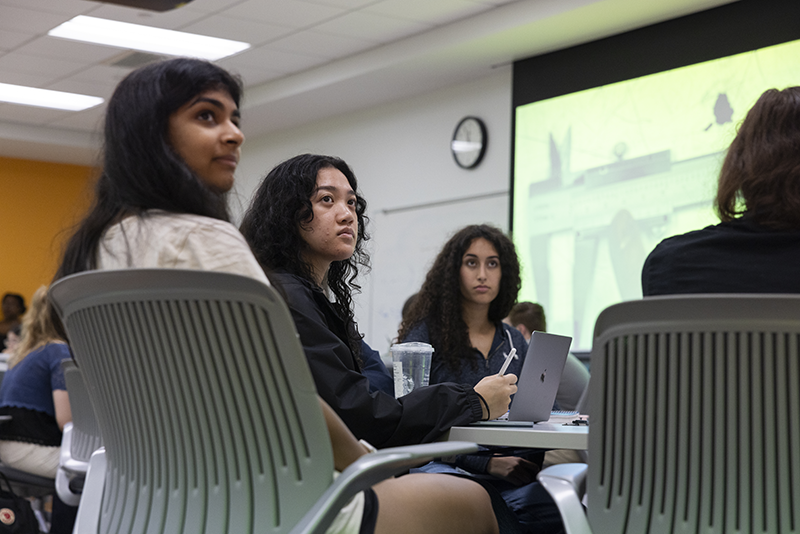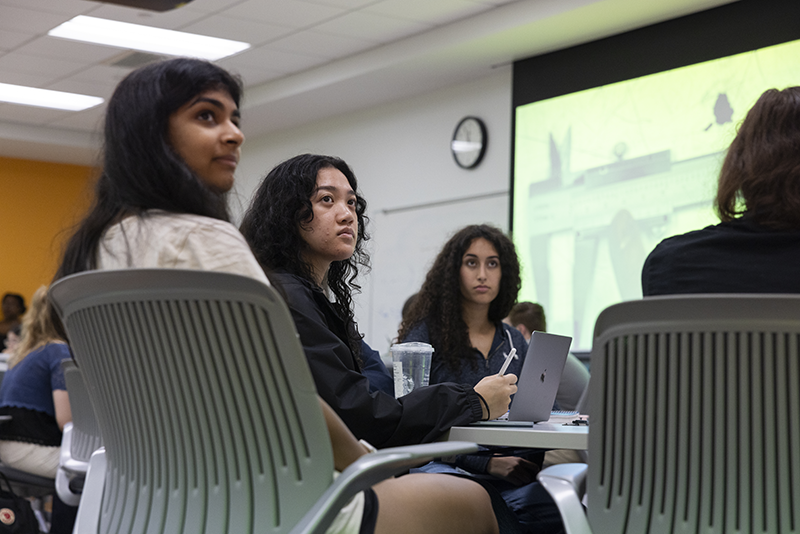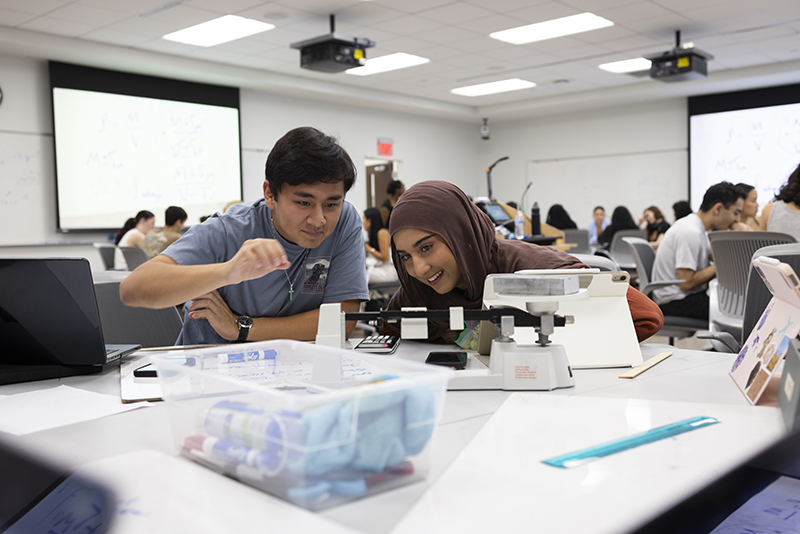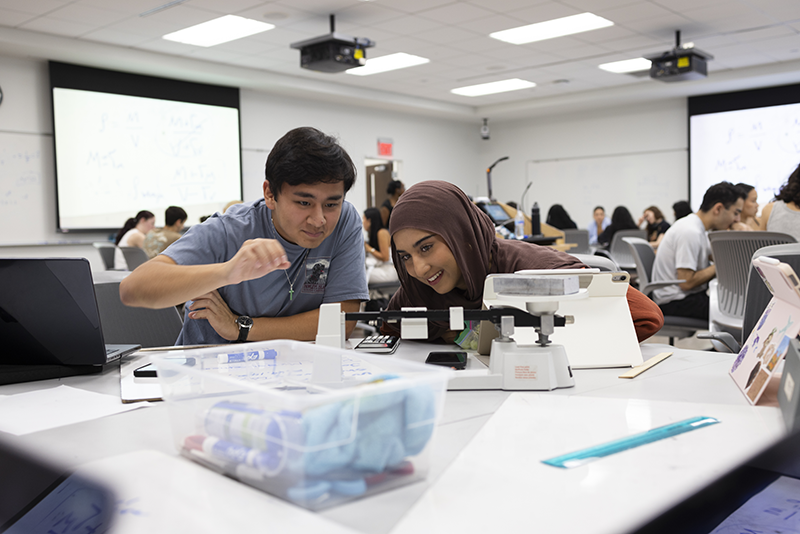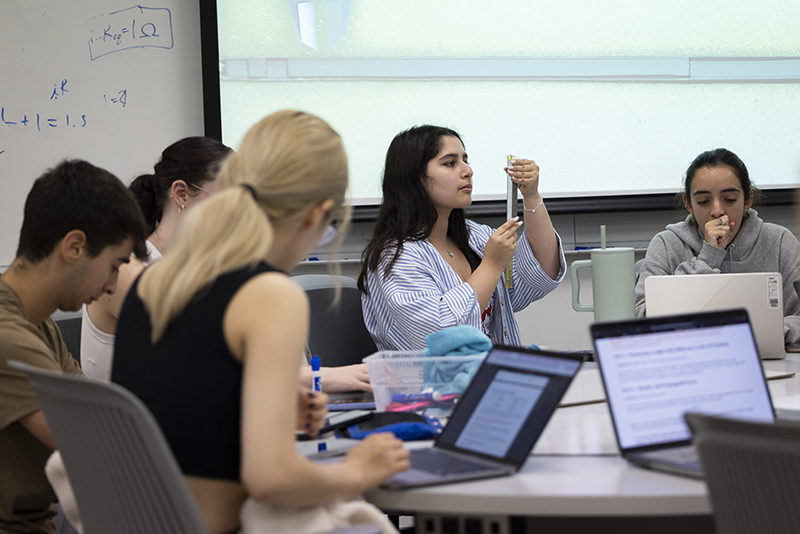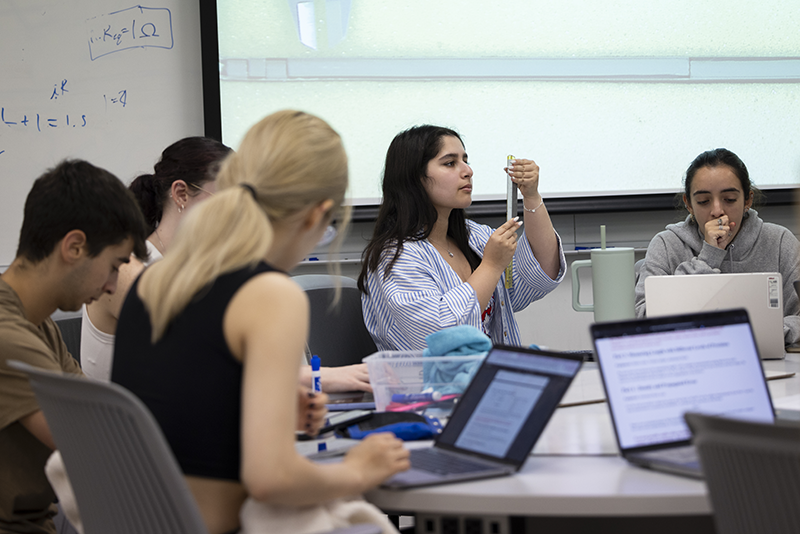Introductory Physics Classes Can Make or Break Students’ Persistence in the Field
While the absolute number of undergraduates majoring in physics has increased in the last decade, the data paints a complex picture of students’ paths. Introductory physics classrooms are often packed, but only a fraction of those students go on to major in physics. Of those that do, many will eventually switch majors—at a higher rate than students in similar programs, like engineering or computer science.
What gives?
The American Institute of Physics (AIP) set out to understand these trends in its recent report “Attrition and Persistence in Undergraduate Physics Programs,” the culmination of a five-year longitudinal study that began in 2018. The researchers surveyed more than 3900 students in introductory physics courses at four predominately white institutions, ultimately tracking 745 students through their entire college experience. When surveyed in the first week of their first introductory physics course, those 745 students all expressed an interest in majoring in physics.
“This study addressed an important gap in our research,” says Anne Marie Porter, the assistant director of statistical research at AIP and one of the report’s authors. “We’ve done a lot of research on physics faculty members, graduate students, recent physics graduates, and majors, but intro physics students are a core group that we were missing.” A college student’s first physics course marks a key stage in a budding career, she says.
Porter says AIP wanted to understand how students become interested in physics as a major, why some students stick with physics until graduation while others do not, and how a student’s identity shapes their experience. By focusing on students in the first week of their introductory physics course, the team could assess “what attitudes they come in with and how that affects their trajectory,” says Porter.
At the beginning of the course, 19% of students reported an interest in majoring in physics. The researchers thought several factors might play a role, like high school courses, confidence in math, or parents’ STEM degrees. But when the researchers compared answers from those interested in majoring and those not interested in majoring, only one factor differed in a significant way: Students interested in majoring thought they would get a higher grade than did students who were not interested.
And even though women comprised only 20% of the introductory physics students who reported an interest in majoring, the study found that the women who were interested believed they would do just as well in physics as their male counterparts.
Alexander Van der Horst, chair of the physics department at George Washington University (GWU) in Washington, DC, one of the four schools that participated in the study, found this result intriguing. It’s almost like “a self-fulfilling prophecy,” he says. “If they come in with confidence, then they are more likely to actually do well.”
In other words, “mindset has a really big impact.”
Laura McCullough, a physics professor at the University of Wisconsin-Stout who served as one of the study’s reviewers, says this finding underscores the need for more interventions in high school, to ensure more young women can see themselves as physicists.
McCullough, who authored the 2016 book Women in Physics, noted that the study provides “good longitudinal data to support conclusions others have put out previously.” For example, the study found that over 70% of the students who opted to leave physics made that decision within the first or second year of the program—a sign that introductory physics courses play a key role in retention.
In one survey question, students could select from a list of reasons why they changed their mind about majoring. Several themes stood out in the answers, like lower self-efficacy in math skills and lower ratings of department climate. Those students were also less likely to have interacted with their physics professors outside of class.
The study also found that women and students from underrepresented racial and ethnic groups were not more likely to leave the major—but when they did leave, their reasons differed. Women who left the major were more likely to say they performed worse on assignments than their peers—and women, Black or African American, and Hispanic or Latino students who left were more likely to report that they encountered discrimination.
One-on-one interviews with students helped shed light on the types of discrimination students experienced. In introductory courses, those experiences tended to occur when working with peers or teaching assistants. Students reported feeling like they didn’t fit in, that their ideas were ignored during discussions, or that “their peers or group members didn’t see them as competent,” Porter says.
“There’s a lot of opportunity for intervention there,” says Porter, “by paying attention to small group dynamics in physics classrooms and by being approachable and encouraging.”
Van der Horst says these kinds of experiences sometimes happen in his department’s introductory courses, too, and can impact any student in the classroom. “It’s important for everybody,” including the students who don’t intend to major in physics, he says. “As a physics community, we should do more to create an environment in which everyone can thrive.”
“The reason we don’t have equity in physics is because of the climate and our culture,” says McCullough. “People come in excited about physics from their high school…[and] the data says that high school is getting it right and college isn’t.” Indeed, of the surveyed students who graduated with physics degrees, most said that high school experiences in physics sparked their interest.
AIP also provided each of the four schools that participated in the study their own report. Van der Horst says GWU had already made great strides toward gender parity in its undergraduate program by the time it participated in the study. His department attributes this achievement, in part, to the strong sense of community among students, and the individual report from AIP backed this up, he says.
But Van der Horst was also hoping the study would reveal more insight into the other “axes” of diversity. This is partly a numbers problem: Of the 745 students who initially reported an interest in a physics major, so few identified as members of underrepresented racial and ethnic groups that analysis was difficult, he says.
Van der Horst says this issue—that students who are members of underrepresented racial and ethnic groups are taking physics but not interested in the major—was a critical finding. It also indicates a different challenge, says Porter: how to attract these students to begin with.
There’s much to do. Across all surveyed students in the introductory classes, the researchers found notable differences between the experiences of white men and the experiences of students from all underrepresented groups. Compared with white men, these students felt that their courses were less interactive, their professors were less encouraging, and their peers were more skilled than they were.
Within the sciences, McCullough says there is currently “a huge push” for inclusive teaching. AIP’s study underscores the need for introductory physics courses to embrace these practices.
The study’s findings were new in many respects. After all, it was “the longest longitudinal study on this topic to date,” according to Porter. But the report’s suggestions for positive interventions are not new: Like other studies, AIP advises departments to design courses with more real-world demonstrations of physics concepts, plan smaller class sizes, encourage professors to host office hours, provide extra support in math, and promote opportunities for students to collaborate on homework and participate in social activities.
So why is it necessary to give these suggestions again—and again, and again?
“Change happens slowly,” says McCullough. “We enculturate our students and then they perpetuate that culture…If our classrooms are didactic and not welcoming, then the people who go on to do physics think the culture should be didactic and not welcoming.” This issue plagues many physics programs today.
“But I don’t lose hope,” she says. It can feel like studies reiterate the same points, McCullough says, but the situation has “gotten better” in her 24 years as a faculty member. She credits the persistence of physics education researchers and efforts like APS’s Effective Practices for Physics Programs (EP3) guide with driving that change. “We need guides like this,” she says.
For Van der Horst, the drivers for change in GWU’s physics program boil down to one question: “Are we serving our students in the best possible way?”
The original version of this story appeared in APS News.
–Liz Boatman
Liz Boatman is a science writer based in Minnesota.



